SRI LANKA HOLIDAYS: The role of Mahavamsa in the national life of
Quote
Hardly any Sri Lankan with a modicum of Sinhala education & a minimum familiarity with the history of the country is unfamiliar with the name of Mahavamsa & with the fact that it is the main source for the national history. Scarcely would a sermon in a temple or a speech on any national occasion pass without a reference to it & the narration of one or more episodes from it. The personages whose lives & careers figure in it are regularly upheld as examples for emulation: King Asoka for his piety & munificence; King Devanampiya Tissa for his devotion to Buddhism; King Duttha Gamini for his valour, patriotism & dedication to the Sangha; Sirisangabodhi for his non violence & self sacrifice; Elara for his sense of justice; King Wattha Gamini for his perseverance & his wife Somadevi for her unwavering loyalty to he r husband.
Some scholars who had observed this preoccupation of the people with their historical tradition-with the Mahavamsa as its centerpiece-have attempted to explain how it had arisen & how its persisting presence affects the life of the new nation. In this impassioned oral statements, Heinz Bechert has been reported as describing it as “the Mahavamsa complex of the Sinhalese” & giving it an unfavourable connotation. E.F.C. Ludowyk analyzed this phenomenon in some details:
“Take Sinhalese, its major group. Beneath the patina of several centuries of civilization, of considerable sophistication of thought & sensibility there lurks something of an older world, not properly assimilated with what replaced it or with the new, & even now disturbing by its presence. This may be little more than the effect on the observer of the complexity of the culture of a mixed group of people with long & various traditions. But this is no ordinary complex; it deepens as the major events of a long history are unfolded. At all times there seem to have been continually present in the culture seemingly incongruous & irreconcilable elements.”
“The Mahavamsa story, the commentary’s elaboration of one detail of it, may yield interpretations different from those suggested here. But to many Buddhists in contemporary Ceylon, whether they have considered either Mahavamsa or Samantapasadika comment on it, it would appear that the test of the sasana in the country-however that word of multifarious meanings is glossed-is its official status as institution identified with the Sangha, patronized by the state & patronizing it. The records of 1500 years ago are not the dead hand of the past, they are the voice of the living.”
“Nationalism in the East has long been regarded as the twentieth–century acceptance of an outdated Western mode, the result of the heady intoxication which followed upon draughts of western Europeans political thinkers. It would seem that it was known in
“Its (i.e.Mahavamsa) thirty-seven chapters arranged its own highly subjective record of the past so decisively that later history was influenced by it. The clearest outlines of its own reconstructions of its events were: the identification of religion with the state; the dependence of the stability of the country on this; the development of a strong sense of Sinhalese nationalism out of the opposition to the Tamils. What was left out of the chronicler, what was slurred over, what was added & amplified seem to have sprung the need to mould the traditional material in his own way.”
As regards trying to develop ‘a strong sense of Sinhalese nationalism out of the opposition to the Tamils,” Ludowyk would have been fair if he also mentioned that the author of the Mahavamsa was objective enough to assess the reigns of Damila invaders not once but twice as ‘just”, i.e. Sena & Guttika reigned twenty-two years justly (dhammena)-21.11; Elara reigned forty-four years being impartial to the friends & enemies in lawsuits (Majjhatto mittasattusu)-21.14. Both these reigns were after the introduction of Buddhism. What Ludowyk has in mind is the elaboration of the story of Dutthagamani to a veritable epic of heroism, with strongly expresses sentiments such as the child Dutthagamini’s assertion on territorial inadequacy on account of the presence of the Damilas in the north & the dubious account of a justification by the Sangha of the killing of non-believers.
Elsewhere, however, Ludowyk realized that he should lay his accusations wider. Apparently, he was convinced that the Mahavamsa was only a systematized epitome or a synthesis of a broad-based historical tradition which, in itself, had given a shape, as structure & sequence to a mass of myths, legends & the like. So he implicated the entire Sangha, saying, “Of all the influences of men & women upon the Sinhala, his (i.e. the bhikku’s) has probably been the strongest. To overestimate it is impossible. This bhikku, a figure as shadowy as those in legends in which he dealt, synchronized oral traditions, & an ancient chronicle with legends of the Buddha, & composed the Mahavamsa, the Pali Chronicle of the early kings of Sri Lanka, dealing with the (history) of the island from the very earliest times to the fourth century A.D. His story gave the Sinhalese a consciousness of the special Buddhist destiny of the island & of their role as defenders of the faith, both of which are at the present day much more potent than sheaves of facts gleaned from any of the fields of history or economics. The early legends… have excited a strong pull not only on the story of
But something more needs to be clarified with regard to the responsibility assigned to the Mahavamsa for generating ‘a consciousness of the special Buddhist destiny of the island.” It is true that Sinhala Buddhists of all levels of education do have a deeply entrenched conception of the special role which
It is with justifiable pride that they would point out the splendid achievements in art, architecture & literature which have been inspired by Buddhism & acknowledge the recognition of many countries of
The Pali Canon, by itself, is to the lasting credit of the Sinhalas in that nowhere else was such a complete & authentic record of the word of the Buddha preserved, studied, elaborated in commentaries, & transmitted uninterruptedly in both writing & a tradition of Monastic education. A multitude of epigraphical records & an ample array of literary works enable the Sinhalas to trace the development of their language over at least twenty-three centuries & the flowering of there skils in literary & political expression for over a millennium.
This multi-faceted cultural heritage has a distinct & unique characteristic. Nowhere else in the world is there a similar record of an identifiable national entity which has preserved their language & religion for a long period in history & extended its cultural heritage far beyond the confines of their territory.
It is awareness & appreciation of this exceptional cultural heritage & role, which gives the Sinhala Buddhists their proudly acclaimed cultural identity. Whether it is an advantage or otherwise, whether it is an asset or a burden, it is there & it has all along impelled them to build upon it & be inspired with greater vision.
The time-tested durability of this cultural identity has led to an inescapable feeling of mission & commitment which Ludowyk describes as a consciousness of the “role as defenders of the faith.” Certain critics & cynics alike have not hesitated to dub it an indigenous brand of chauvinism. Whether such a description is accurate or fair or otherwise, a Sinhala Buddhist ideological commitment has found expression in a substantial patriotic literature in Sinhala. Further it has been the prime motivational factor in the rise of religio-nationalistic forces whenever the cultural identity was threatened due to foreign influence or internal causes. National heroes of
Unquote.
Prolegomena of translation of Mahavamsa by Dr. Ananda W. P. Guruge.









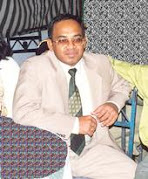













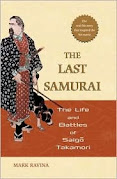


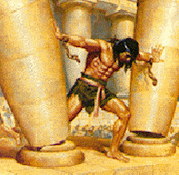









































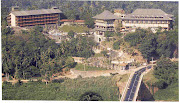








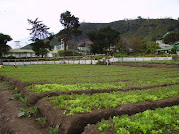














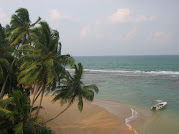












0 Comments:
Post a Comment